I first heard the name Martin Metal (pronounced Met-AL) in an animated conversation between Mark Bulwinkle and Zalman Sher, son of the late wire artist Emil “Izzy” Sher. Bulwinkle had known Metal over the years and they both worked on installations at the original Rasputin’s. Zalman had worked for Metal. They spoke of him in almost mythical terms, years after his 2007 death.
They spoke of his big red truck with a crane. The truck is shown in this photograph from an advertisement for the Ski Hut. The Ski Hut was located at 1615 University Avenue. It was an early outdoor store where skiers and rock climbers hung out in the 1950s and early 1960s.
Once the seal was broken, it seemed that everywhere I turned I heard something more about Metal and his work. He was a larger-than-life part of Berkeley before Berkeley’s Big Changes, He kept his Bohemian/artistic ethos even as Berkeley was caught in the swirl of rapid and radical social change.
I present here a small sample of his work and a short treatment of an extraordinary life of an extraordinary man.
Let’s start with the work. Some of Martin Metal’s work may still be seen.
This horse is in San Ramon and the photo is not mine. It is one of Metal’s later works. Here are a few family photos of the horse:
As impressive as the San Ramon horse is, this is not a blog called Quirky San Ramon so let’s get back to Berkeley. Metal’s work that can be seen in Berkeley:
This mosaic/cement piece is just outside the door of the Caffee Mediterraneum on Telegraph. I start with this modest piece because Metal was often seen at the Med in the 1960s.
The lead photograph on this post was taken at the Med by Elio de Pisa, the coffee counter man at the Med for years.
The Caffee Med was a Martin Metal spot.
Down in abandoned foundry land of southwest Berkeley, a large Martin Metal steel piece sits doing what steel does outside. It produces an iron oxide, usually red oxide. The reaction of iron and oxygen and the presence of air moisture. Rust.
His daughter Madeline explains: “These were commissioned by the same developers, together with the San Ramon Iron Horse. They were the last large works of my father’s. The development projects fell through, and my father opted to keep the works. Gary Glasser co-created them with him.”
Just a few blocks east on Carleton is Juan’s Place.
All of the grill work on the windows is Metal’s, although he did not paint the figures and did not envision them painted.
A large Martin Metal concrete and ceramic sculpture/mural stands over the King Street entrance to the Malcolm X School.
This family photo was taken shortly after installation of the piece:
Pivot/Digression Warning: Metal worked in concrete elsewhere. His daughter Madeline identifies three large concrete projects – the Marina Vista Project in Vallejo with realistic representations of historical Vallejo events, a smaller one in Pleasant Hill, and this at 4th and Gish Streets in San Jose:
Here are several other photos of Metal working with concrete:
Pivot back – Lastly for public art in Berkeley, there is a Martin Metal climbing structure at the New School of Berkeley. You can see the structure from the gate at the north end of the school.
Several family photos show the structure under construction and shortly after installation.
Metal’s family has a few of pieces and let me take photos or shared photos with me. From the home of Kathleen Curry, his divorced widow, are these photos of Metal’s work:
Metal made this heavy walnut table and the metal legs. It sits ouside and has aged over time.
These oak benches sit on steel I-beam legs.
This sconce was made for Russell Bass and his Cafe de la Paz on the second floor of 1600 Shattuck, which has been closed almost ten years. I remember the cachapas with affection.
Mark Bulwinkle made this 80 piece for Metal on his 80th birthday. It sits here on one of his oak benches.
Daughter Aurora Metal shared these photos with me of pieces her father made:
Metal made this piece for his then-in-laws, Kathleen’s parents.
Aurora Metal owns this piece, an abstract depiction of a woman.
Metal made an animal for each of his daughters with Kathleen. This bull was his gift to daughter Aurora.
Metal’s back-fence neighbor was Barry Wagner, who still lives on 9th Street just west of where Metal lived and where his daughter Madeline lives.
Shortly after Wagner moved in, he met Metal and Metal’s dog Friend. Wagner tracked down Friend’s half-brother Wolfie, brought him home, and the dogs became fast friends, as did Metal and Wagner.
Wagner bought a number of Metal pieces.
Don’t you love the letterhead and envelope?
Here are the pieces:
Metal made architectural models that were part of an exhibit for the City of Berkeley and were displayed on the grass in front of the old city hall in the late 1970s. Wagner has two:
One is in front of the house.
And one is in his backyard. Metal’s neighbor to the south on 10th Street also has one.
This one belongs to Catherine Jones.
After the original publication of this post, I heard from Ken Taranto, who met and bonded with Metal in 1977. He photographed much of Metal’s work in 1997. A few of those photographs are not interspersed in the post, while here are many others.
Taranto writes: “These were pieces he had in his home which I think were simply various treatments of copper through the application of chemicals to copper plate to create patinas, patterns, and colors.”
Metal daughter Aurora adds: “He used 1/4″ copper plates and rubber cement as a resist to make the design, then submerged the plates in acid to etch them. After the etching he peeled off any remaining glue and applied chemicals to create the patina, followed by a varnish. The chemicals were harsh and smoked a lot, and my dad never used a respirator. Amazing that he made it to 88!”
This is from the Durant Hotel – way cool!
Taranto believes that these paintings may be from the 1930s, certainly from the 1940s. The top painting is on plywood, the bottom perhaps on illustration board.
Taranto describes this as an early wood piece, less than a foot high.
Taranto: “This is made from lignum vitae, I believe.” Daughter Aurora Metal identifies this as a piece that stood at Milvia and Allston, the northwest corner of Berkeley High School, for many years.”
This is one of four stained glass windows that Metal made for Ken Taranto’s Perry Street home in Greenwich Village, New York.
The last of the Metal work that Taranto photographed was a rock garden depicting Exodus 14:21: “And Moses stretched out his hand over the sea; and the LORD caused the sea to go back by a strong east wind all that night, and made the sea dry land, and the waters were divided.”
Metal did not create Moses, just the sea.
Taranto took these photos of Metal, again in 1997. They stun.
Moving on – examples of Metal’s work that are either not public or not in Berkeley or that are gone.
Discovery Investments Inc. lists 690 Panoramic Way in Berkeley for rent. The house was built in 1969.
The listing identifies “a signature fireplace made from cast concrete and copper by the metal sculptor Martin Metal.” Signature indeed!
Another fireplace:
Metal designed and fabricated this front gate for Berkeley Rep:
In 1971, Metal designed a fabricated a large star that was installed in the window of the Great Western Bank on Shattuck:
When Ken Sarachen opened Rasputin’s Records on the southwest corner of Telegraph and Durant, he commissioned work by Mark Bulwinkle and Martin Metal, two giants. Metal designed and fabricated railings made from brass, copper, perforated tin and compact discs.
Ken Taranto took these next Rasputins photos:
The space is now Bear Basics.
This piece was named “Elevation of Man’s Spirit Through Books” (circa 1978). It was hung at Cody’s Book Store.
Vasili’s was a grand San Francisco restaurant, located at 44 Campton Place. Metal made several large pieces, both exterior and interior.
Narsai David commissioned this 19-foot-long woman made with bent 3/4″ steel rods from a water tower for his restaurant in Kensington. Kathleen was the model for the woman.
The steel rods are clearly seen in these two photos:
It is reported that the woman is now in David’s backyard, as shown in these last photos.
The Credit Agricole doors were in San Francisco.
This is St. Bartholomew’s Catholic Church in San Mateo. The steel columns are adorned with brass, bronze and copper grille filigree.
The pylon sculptures were for the Jewish Community Center in Stockton.
This patinated light was designed and fabricated for a private residence in Palm Springs.
So – what of Martin Metal the man?
Martin Metal was born in Chicago on July 29, 1918. He was for all intents and purposes raised by a single mother.
He earned bachelor’s and master’s degrees in Humanities from the University of Chicago in 1940. Throughout his life he read and studied philosophy, history, and advanced mathematics. He was a lifelong learner.
While at Chicago, Metal made this new year’s cards which he sent out with his mother Madeline.
Metal also was an instructor and curator with the Chicago Art Institute.
At the Institute of Design, Metal was a colleague of László Moholy-Nagy, a Hungarian who in 1923 had become the instructor of the foundation course at the Bauhaus.
Moholy-Nagy worked with photograms, photographs, photomontages, posters, sculpture, and light-space modules. He was a great influence on Metal. He died in 1946 of leukemia.
Early in the war, Metal married Joan Reed, an Australian. They had a son, Innis who later took the name David and his mother’s last name.
Metal served in the Navy from 1943-1945, teaching aircraft recognition. The US military continues to use “WEFT” as a mnemonic for the major features of an aircraft. Wings, Engines, Fuselage and Tail assembly. These elements differ in shape, size, number, and position. The differences distinguish one aircraft type from another.
After the war he taught cultural studies at the Institute of Design from 1947-1948, picking up where he left off when drafted.
Metal and Joan moved to California where he did graduate work in philosophy at Stanford. He began work on his dissertation on “The Line,” with first wife Joan acting as his editor. When he and Joan divorced, he moved to Berkeley and was a PhD. candidate at Cal from 1949-1950.
In 1949, early in the Cold War, the Board of Regents at Cal imposed a requirement that all University employees sign an oath affirming loyalty to the state constitution and a denial of membership or belief in organizations advocating overthrow of the United States government. That tipped Metal away from Cal. He was not afraid of his past, but he objected to the totalitarian nature of the pledge.
In the late 1940 and early 1950s, Metal spent time in Sausalito. In this Marin photo he is shown with Marianne Lindheim, a potter.
Metal then married Phyllis Meagan from Wind River Mountains, Wyoming. She was best known as a ceramicist, but was also a gifted painter, sculptor, mosaicist, and fiber artist. She and Metal had three daughters born between 1955 and 1957 – Meta, Maurya, and Mercedes.
Here Metal and his first-generation daughters are shown in front of Simon Roddia’s Watts Tower, a staggering piece of folk art in Los Angeles.
The fascination that Phyllis had for mosaic work was probably the draw for the family. She and Metal divorced in the 1960s.
Over the years, Metal taught at the Richmond Art Center, the San Francisco Art Institute, City College SF, and the Cailifornia College of Arts and Crafts. He had many loyal sculpture students who continued their work with him in private classes at his workshop.
Before finding his way to metal and concrete work, Metal experimented with photograms, which are pictures produced with photographic materials, such as light-sensitive paper, but without a camera.
This is from “The Art of the Photogram” show at the Oakland Art Museum in about 1950.
He curated museum shows, including “Into the Child’s World” at the De Young:
Metal’s daughter Meta writes about her father’s love of teaching children: “My fondest memories of Dad was as an art teacher. When he taught children’s classes, he introduced innovative projects and materials that they would never have access to otherwise. If the kids made a mistake, he would tell them it was his favorite part of their project because it was the most creative.”
And the “American Business and the Arts” show at the San Francisco MOMA:
In 1960, Metal created a steel relief mural for Kaiser Steel Corporation’s home offices in the New Kaiser Center.
In the spring of 1969, Metal met Kathleen Curry, who would become his third wife, at the Med. Of course. She had recently arrived in Berkeley after years in Paris, Morocco, and Turkey. Metal and Curry had three daughters.

Madeline (the elder) holding Auorora, Madeline (the younger), Maurya, Mercedes, Meta, Martin. Photo courtesy Kathleen Curry
The two sets of three daughters occasionally saw each other at family events. Here the two older children from Kathleen sit with the three from Phyllis, and with Metal and his mother.
Metal and Kathleen instilled in their daughters a love of art, seen here exploring the driftwood and beer-can art of the Emeryville mudflats.
Metal also instilled in his daughters a love of music. Here he strums a stringed instrument in the home of Kathleen’s parents in Carmel. Metal could play many instruments and he seriously considered a career as a composer. He loved and had a great knowledge of classical music (Beethoven, Bach, Brahms) and opera.
He taught his family to sing sing rounds with harmonies – “Great Tom is Cast,” “Man’s Life’s a Vapor,” “White Sand and Grey Sand,” “Sumer is Icumen In,” and “Riding Down to Portsmouth.”
His favorite was “Take My heart Into Your Care” by Orland DiLasso in three-part harmony, arranged for the San Francisco Girls Chorus.
Kathleen and Metal divorced. The second-generation daughters grew up in Berkeley, spending time with both parents. His love for his daughters was grand.
As he aged, Metal kept working. He never stopped.
Metal often quoted Thomas Edison when he talked about sculpture – it is 1% inspiration, 99% perspiration. His philosophy of art – and life – is captured in the final page of this program of an exhibition of his work.
Archana Horsting, co-founder and director of the Kala Art Institute, knew Metal and remembers him with admiration and affection: “He was a dear friend and a living legend when I knew him. We had wonderful conversations about art and music, the Bauhaus, Chicago, and the Bay Area. Over endless cups of coffee, he even convinced me to pull out my old violin to play (badly) duets. He was crazy about his beautiful daughters and so proud of their talents. He visited me at Kala Art Institute just down the street from where he lived for so long. He was generous with his time and helped Kala with some tricky projects. All in all, a wonderful man. I wish had photos to share with everyone. I don’t. I do have some indelible memories.”
Metal died on February 28, 2007. A daughter and her family live in house / workshop at 10th and Grayson. His life and work inform them strongly.
Having immersed myself in Martin Metal’s life for a few months, I have a sense of him, but only a sense. Bulwinkle remembers him as someone with a broad and deep knowledge of classical music, opera, and philosophy, as well as an artist. Talk to anyone who knew Metal and you will hear about a kind and generous and learned artist. He did not attach himself to academia, did not seek wealthy patrons, and yet he found a way to be an artist as he understood it. He survived and raised two families.
I also look at Metal and remember a time that I didn’t know, a different time in Berkeley, when artists sat and idled away hours at the Caffee Med. When freedom was not just another word for nothing left to lose. When we were filled with hope.
The members of Metal’s family who I met live with him as a presence in their lives. He and his kind were an important thread in the fabric of Berkeley. I wish I had known him. I wish that I could talk to him about his life.
I showed this post to my friend. He came back to me a day later. “Showed it to someone. She liked the Panoramic Way fireplace the best. So did I. Do you think that was just a coincidence?” He then wandered off into a discussion of hitsuzen. “Some say that there is no such thing as coincidence. The only thing is hitsuzen, which is a naturally fore-ordained event. A state in which all other outcomes are impossible.”
Okay! he’s got some hitsuzen going on it seems like. But, that aside, what about the Martin Metal story?








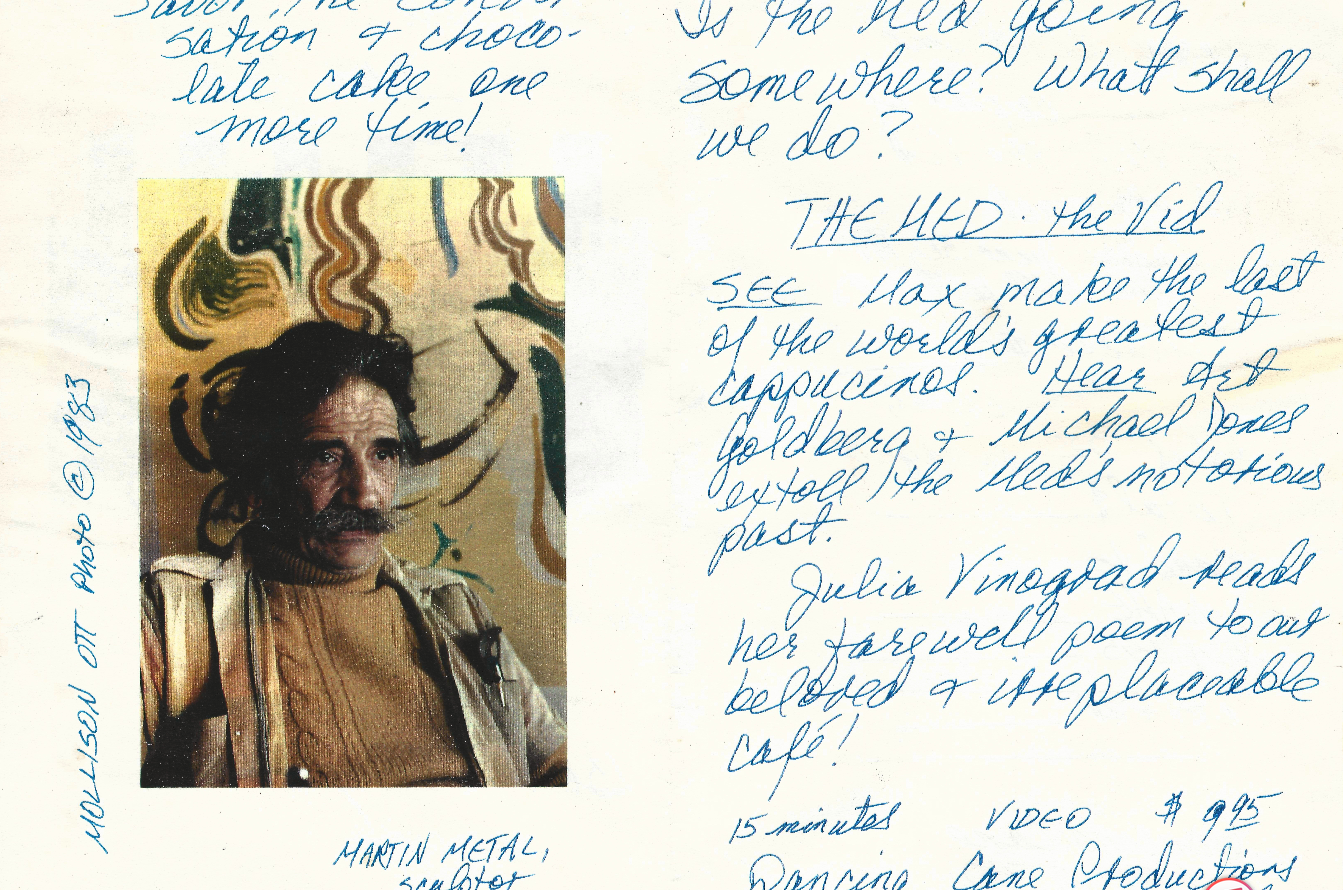
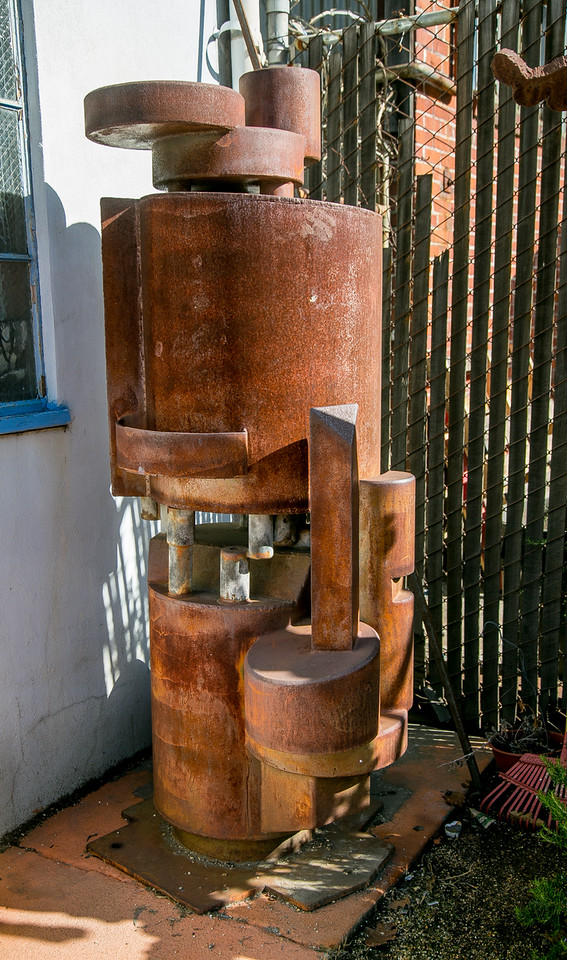








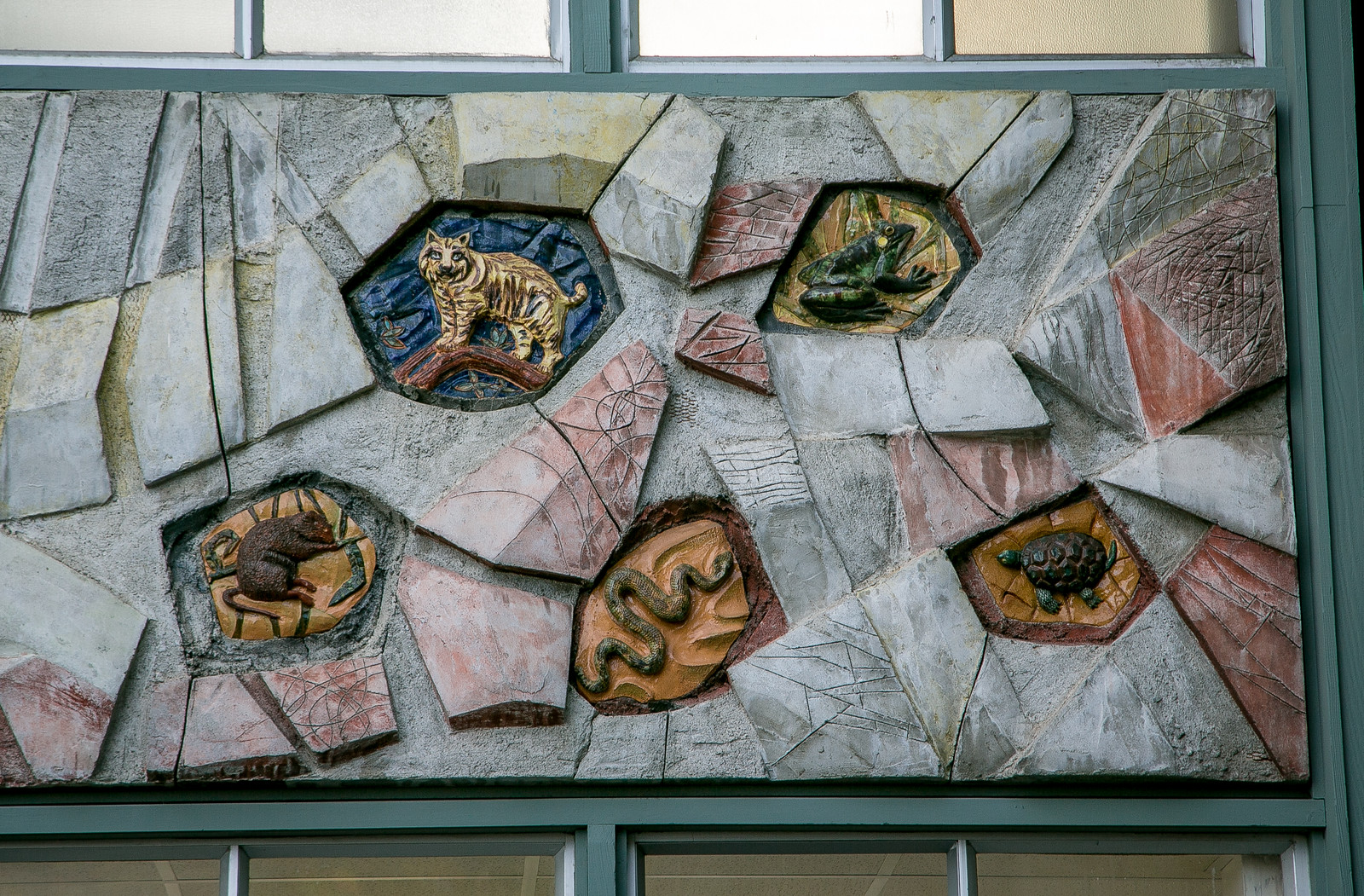

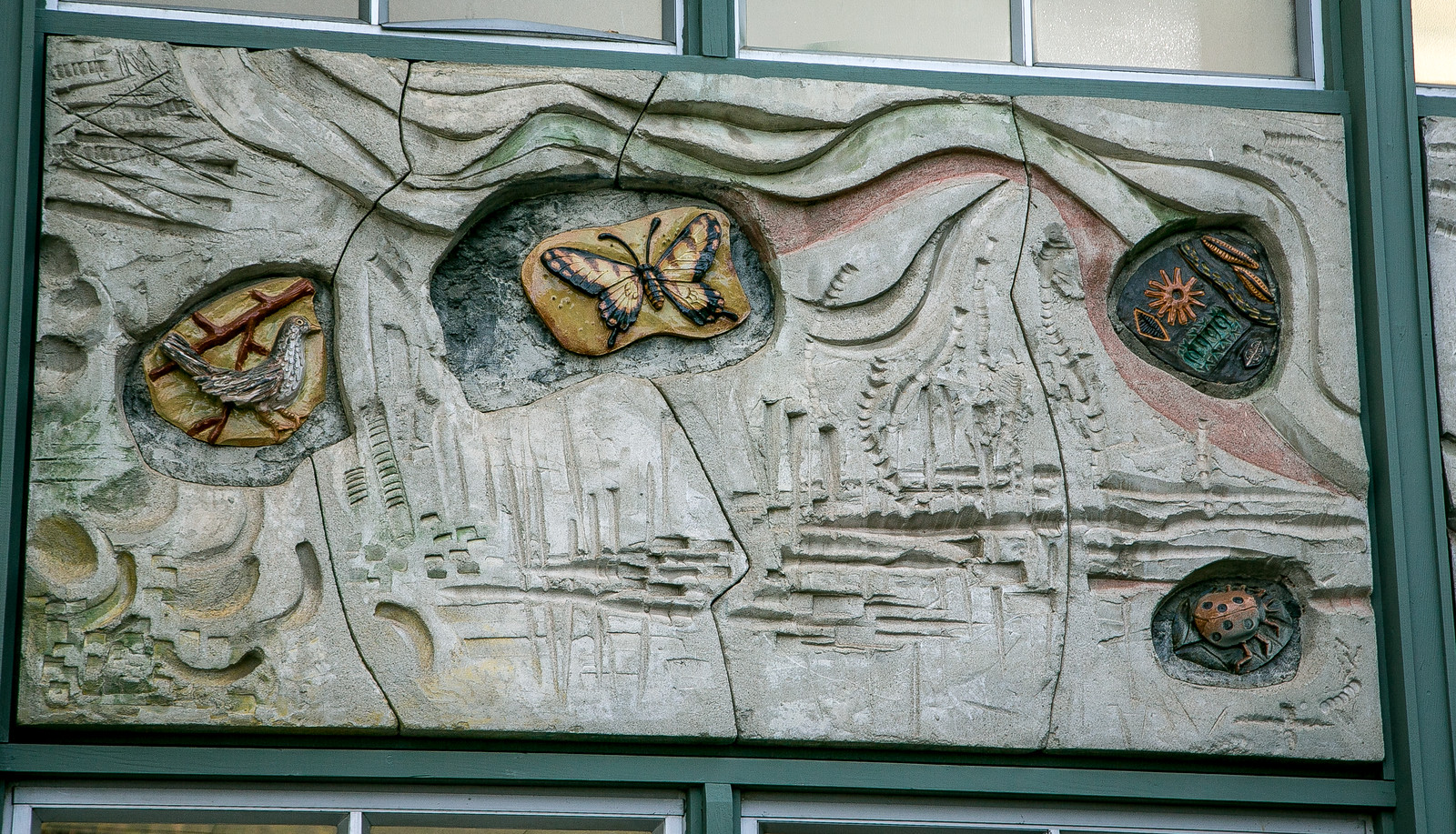
























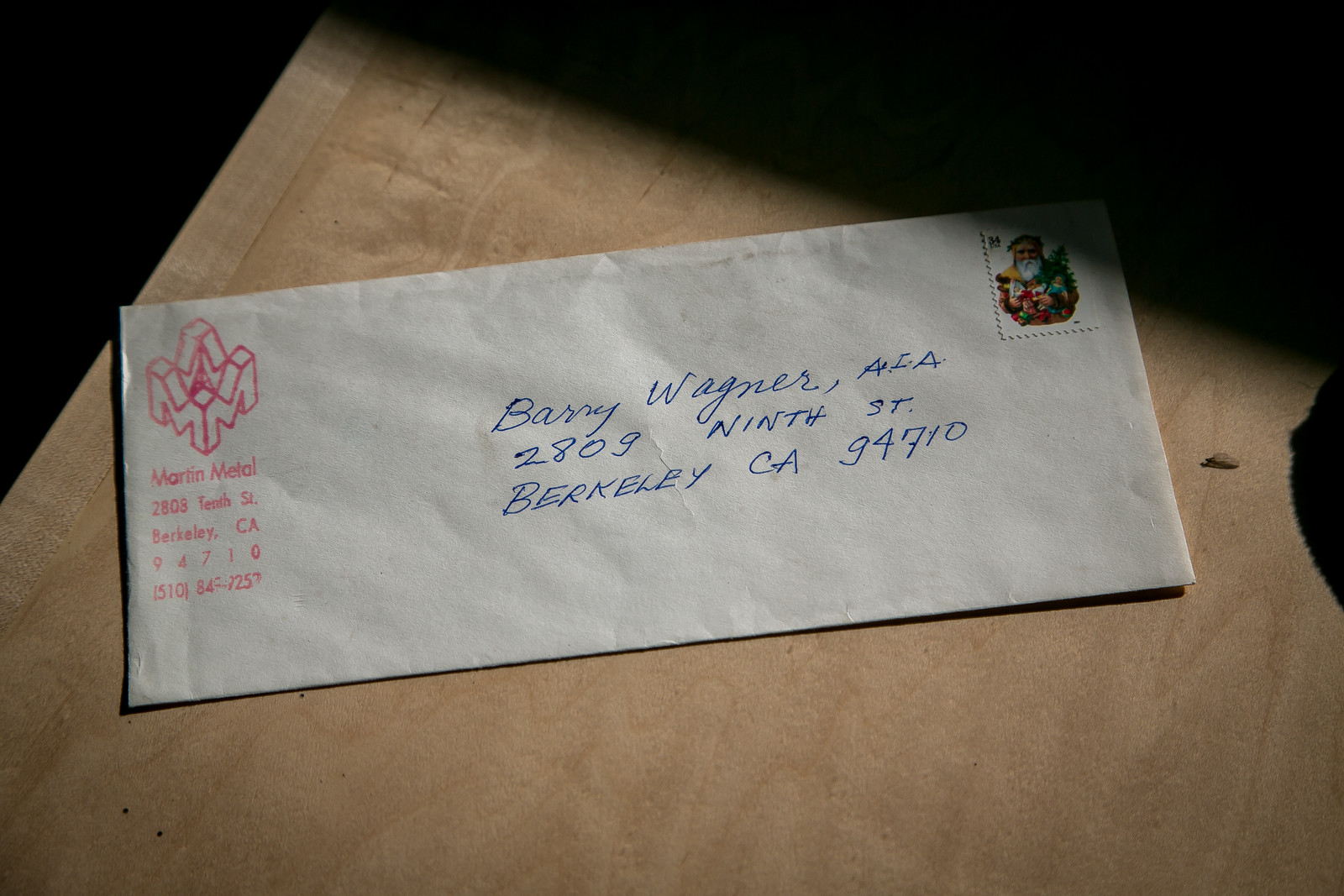

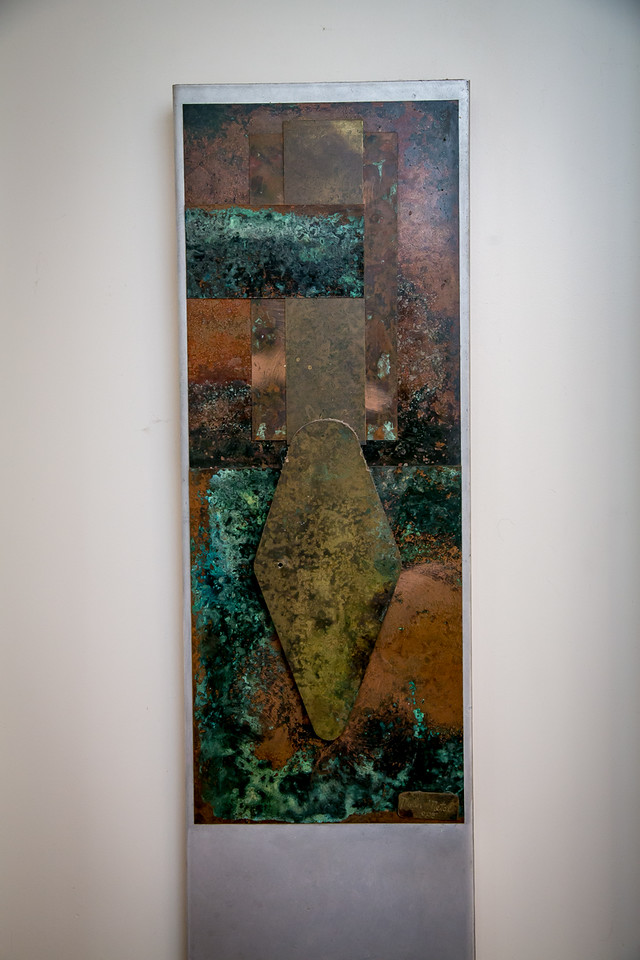
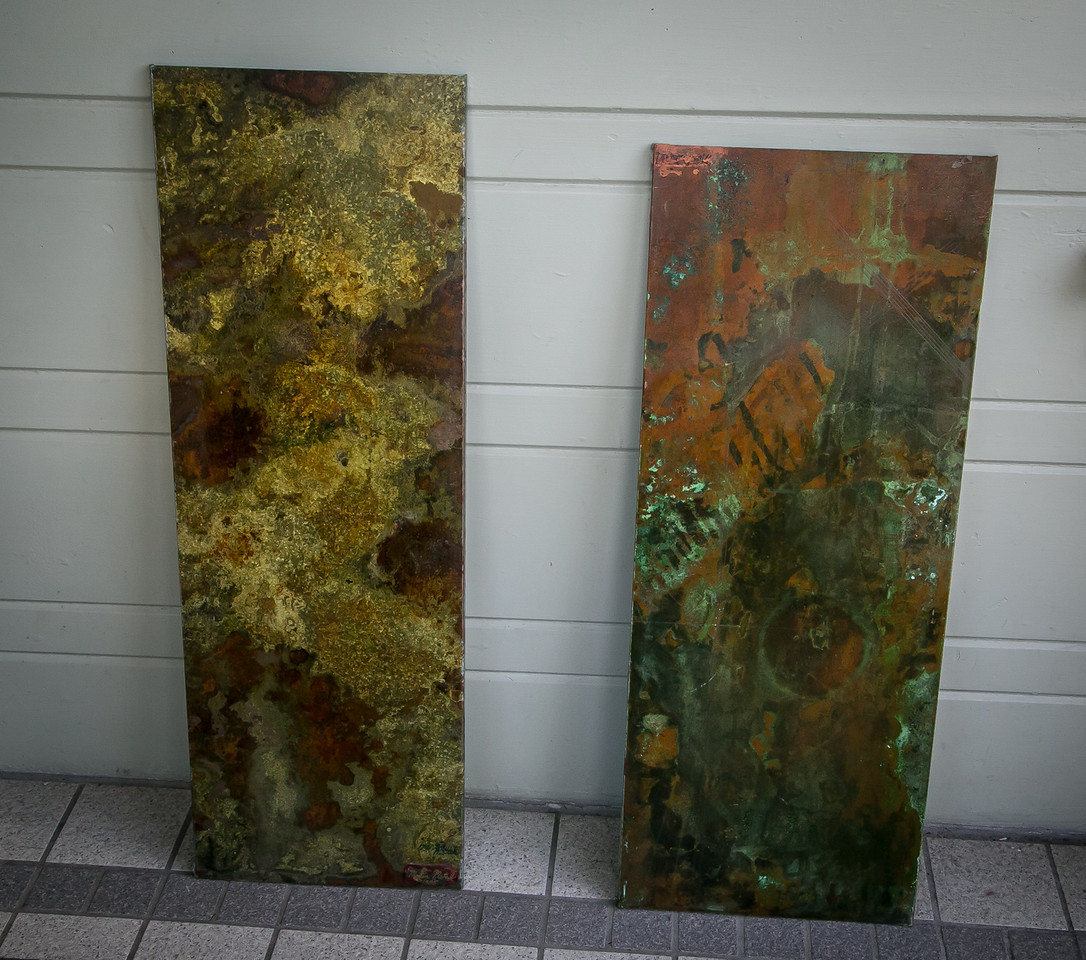













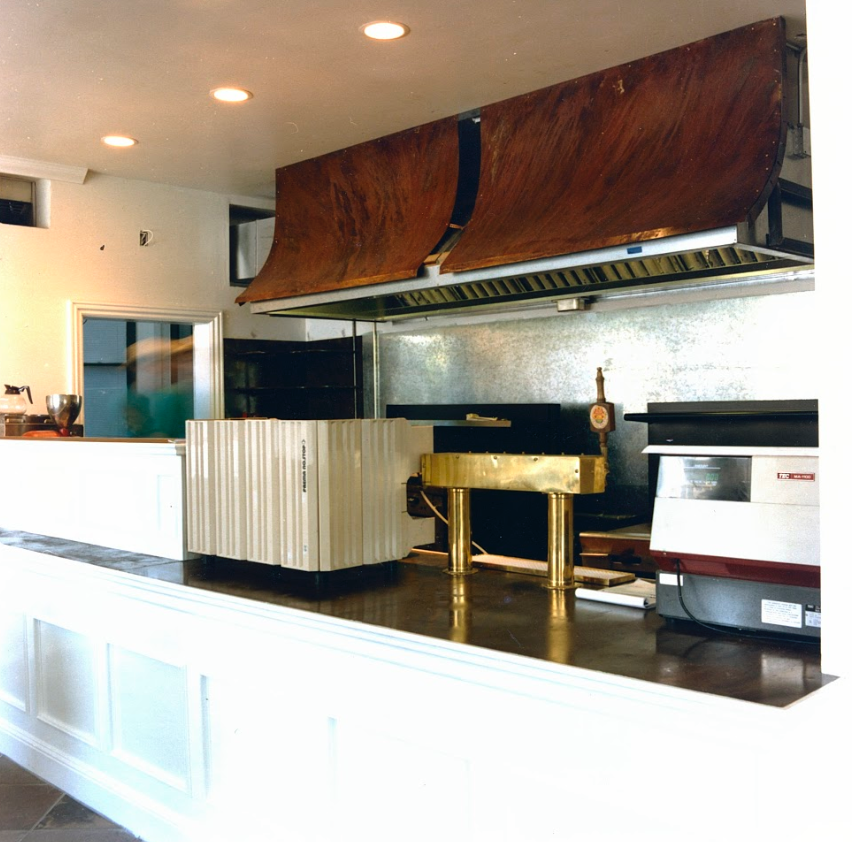


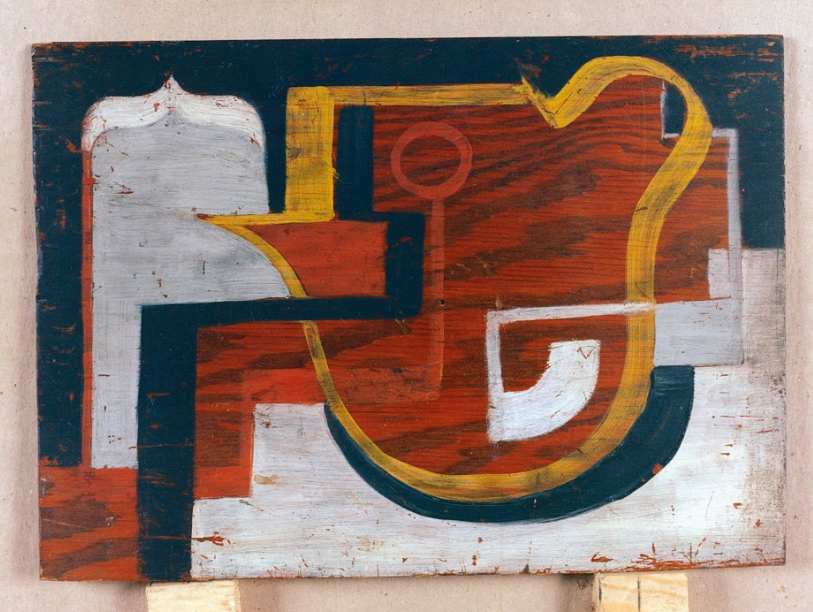





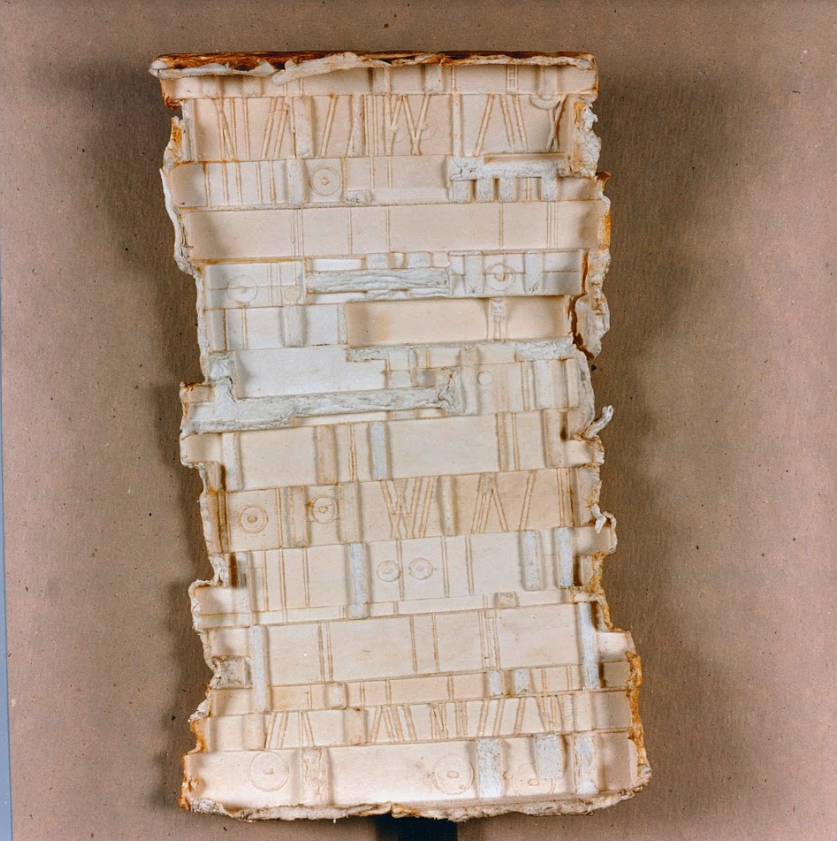


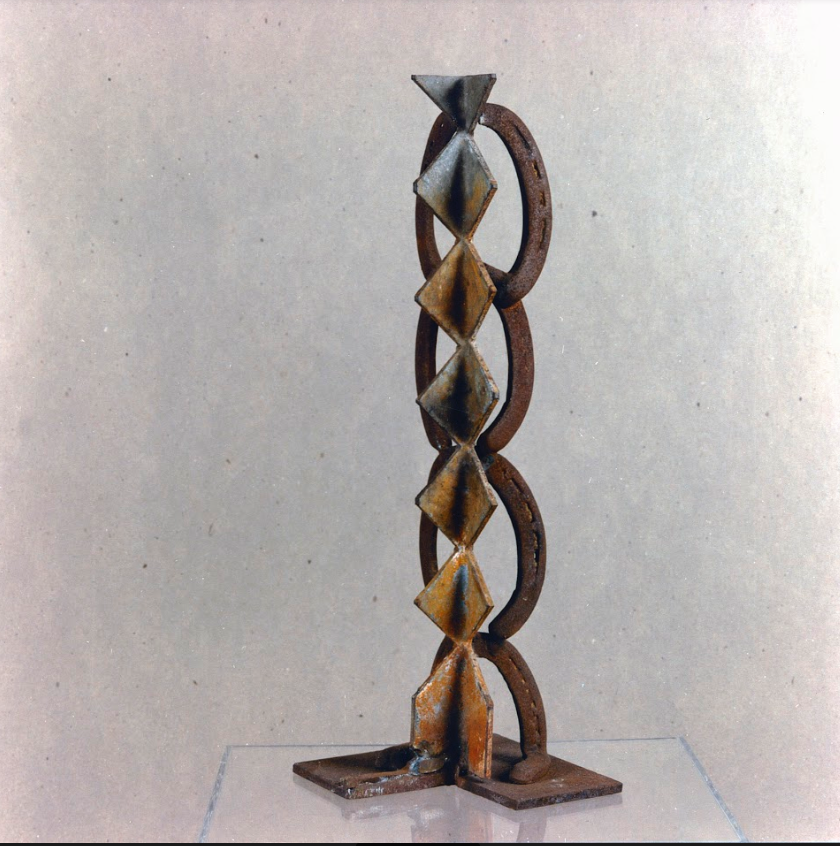



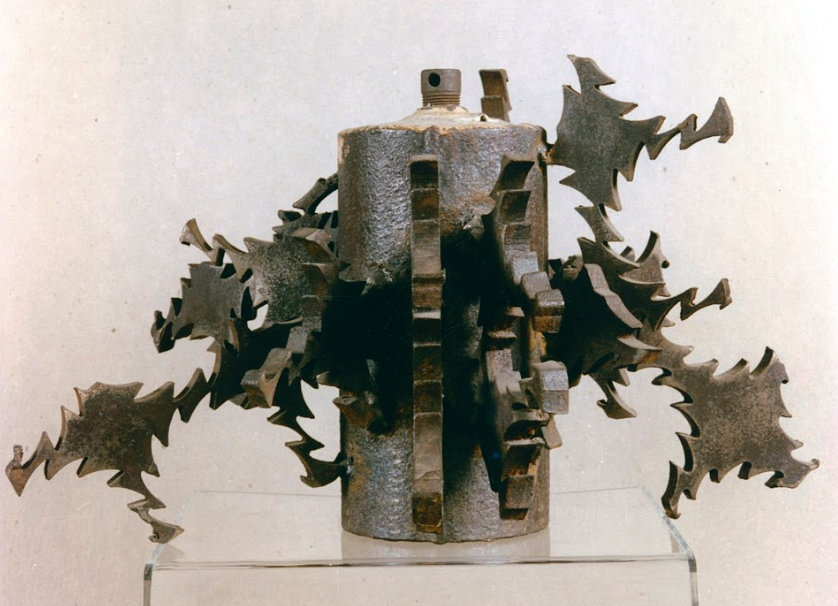









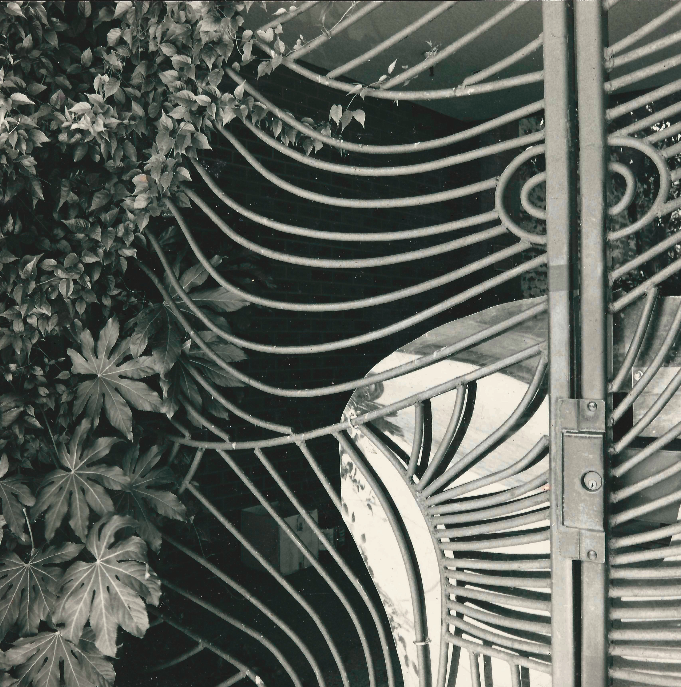















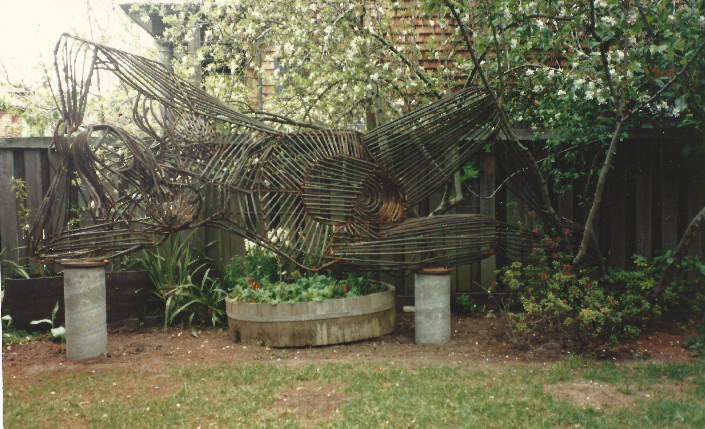










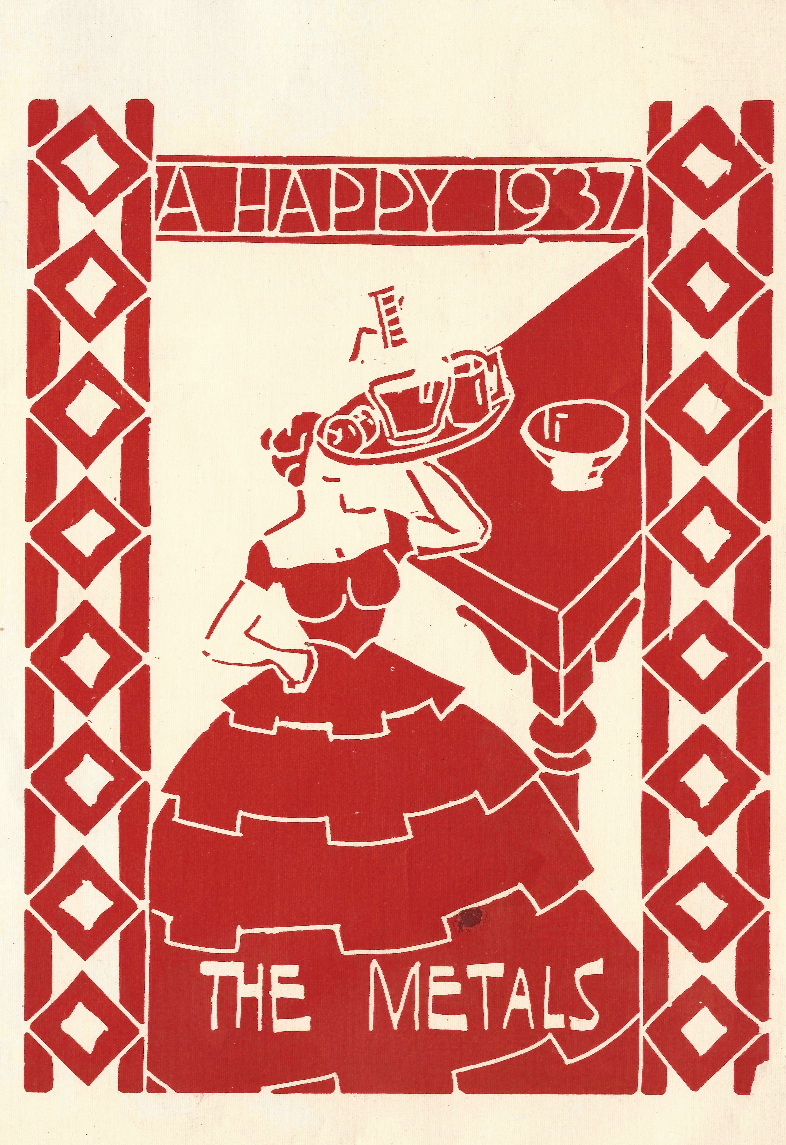


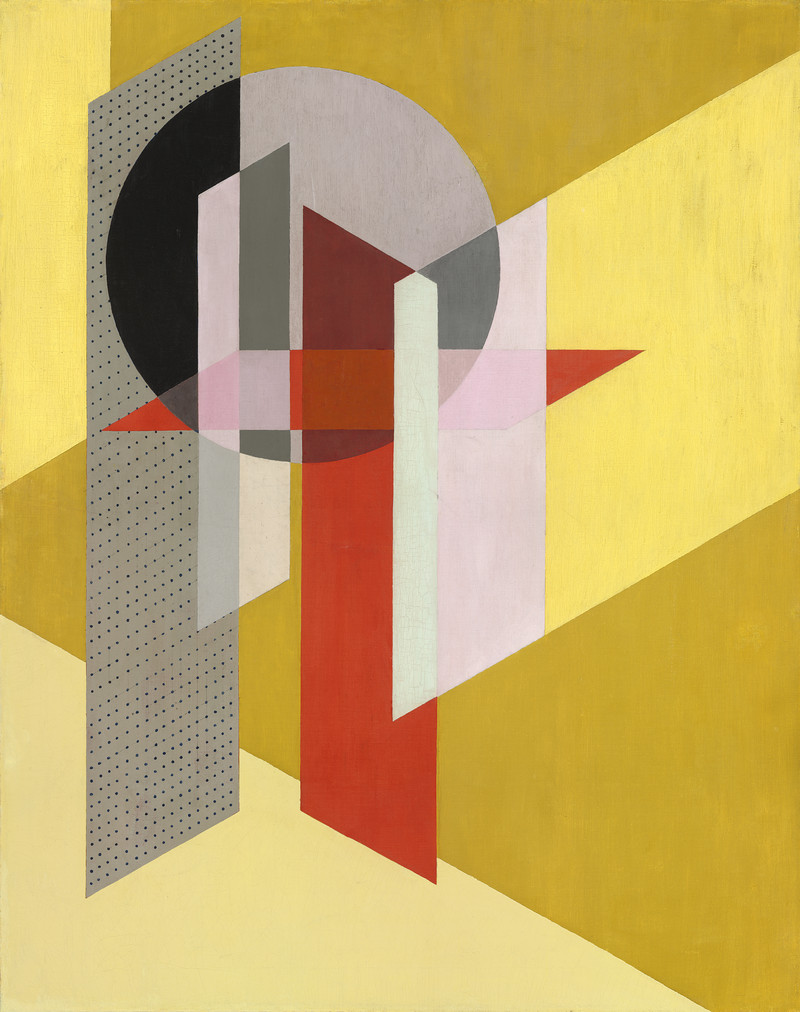




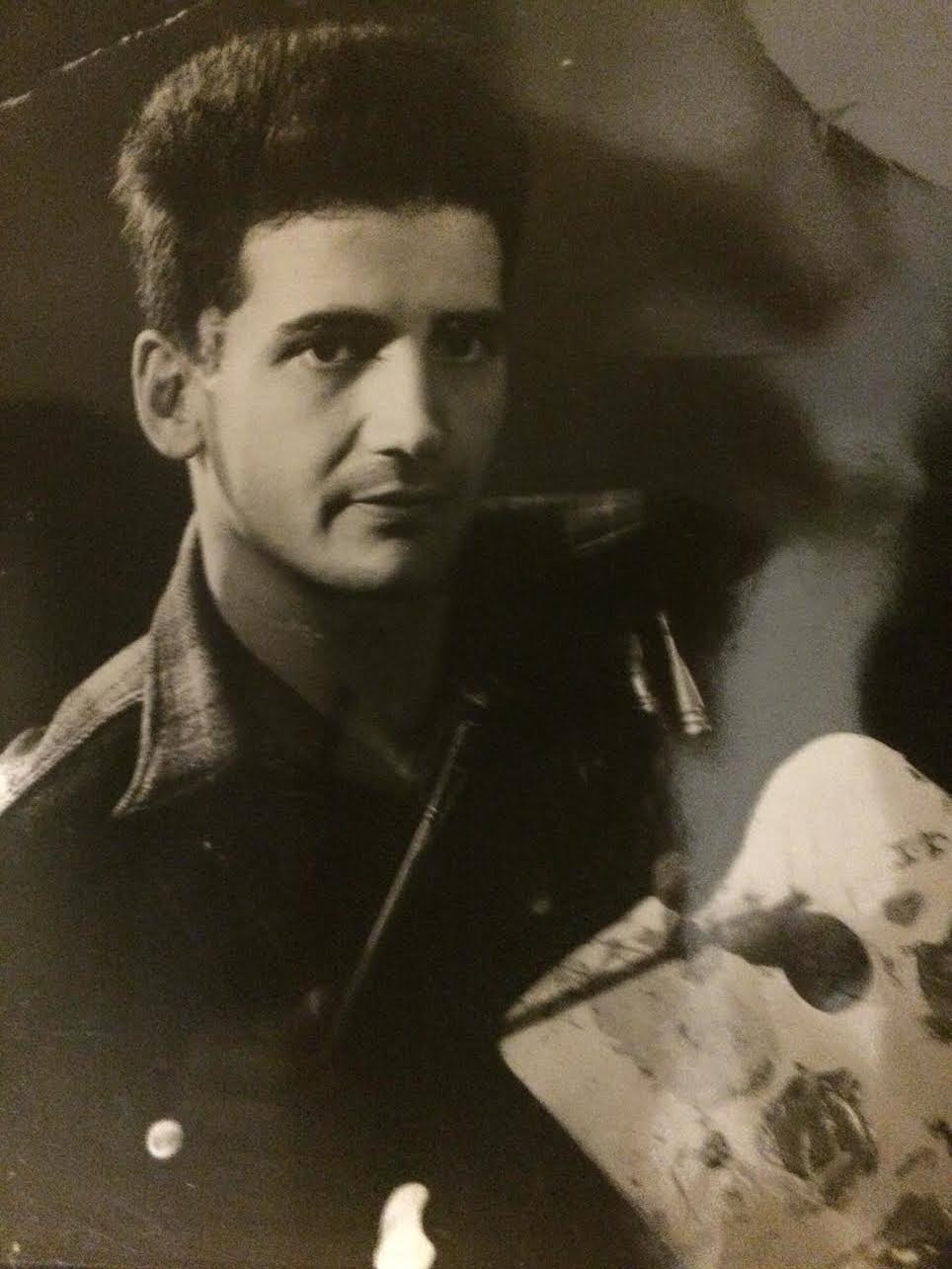





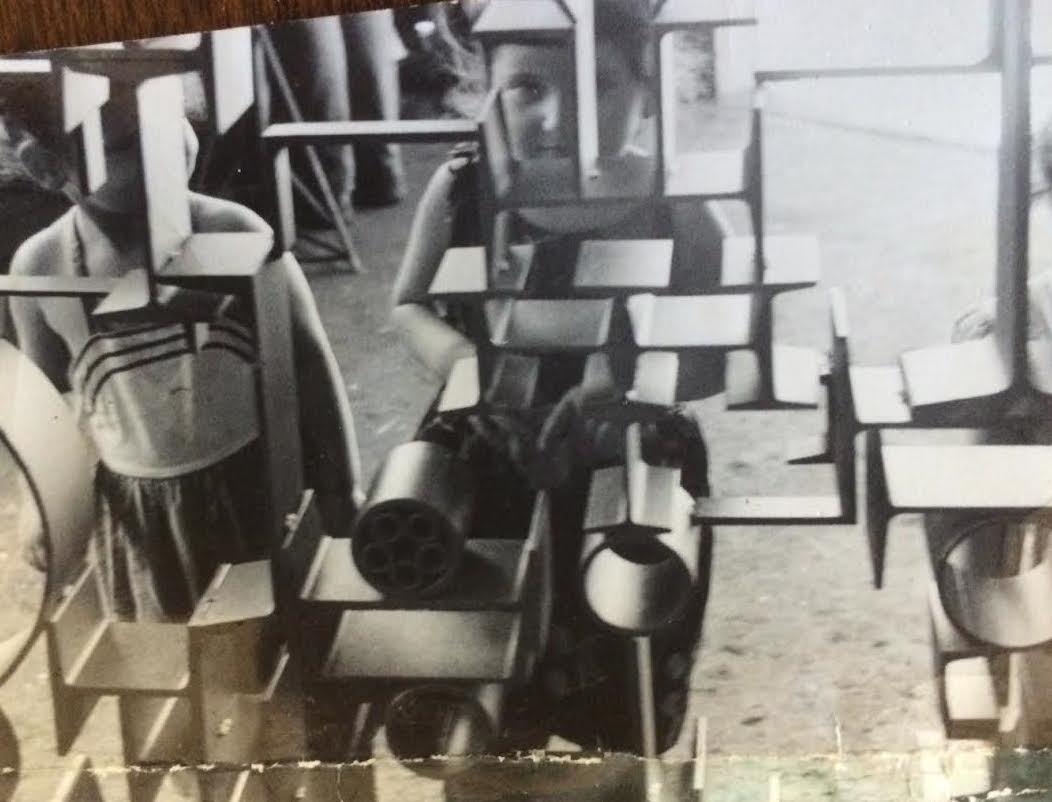





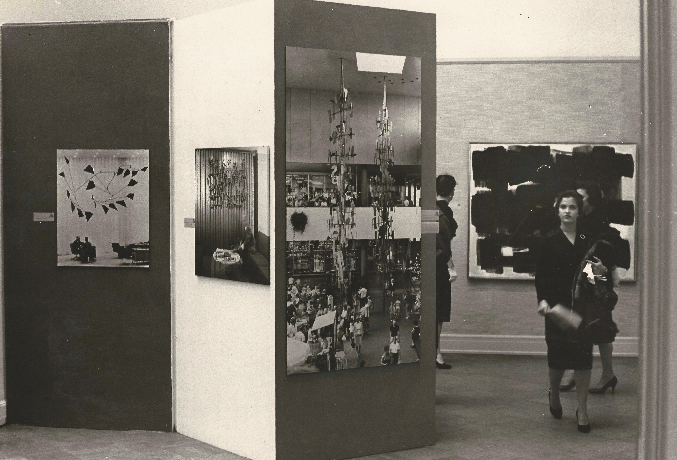








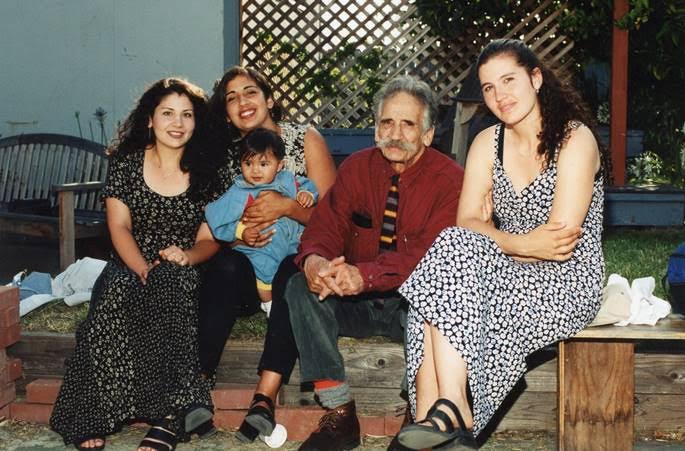








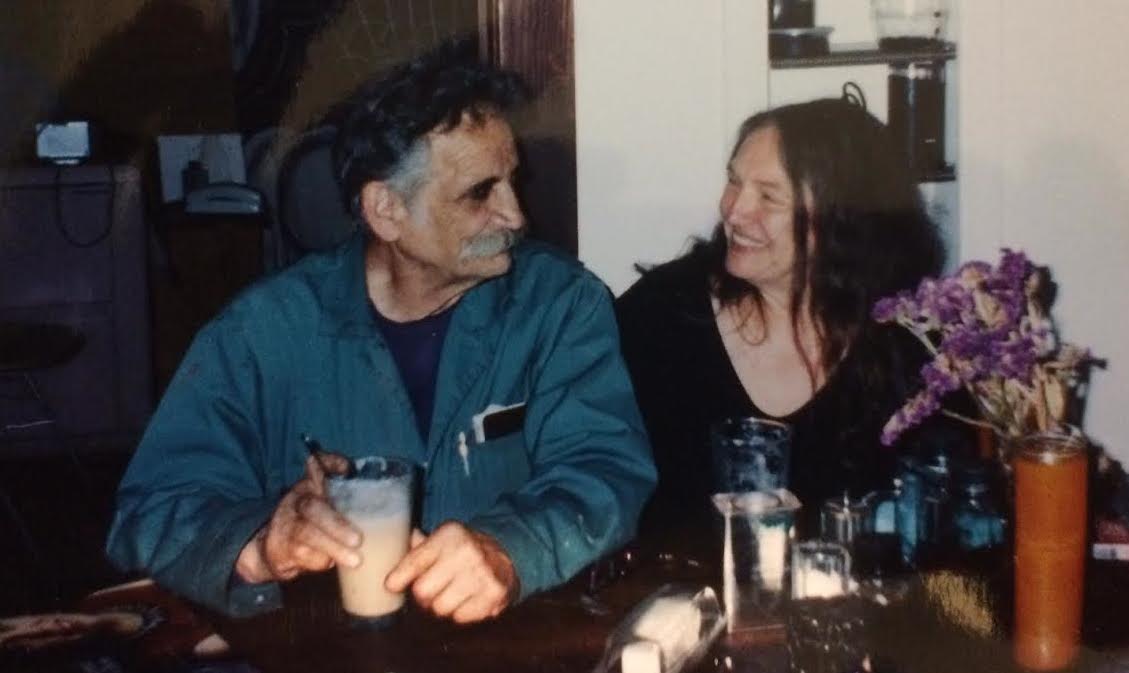




Hi Tom,
Rob Garross worked for Martin for awhile, you might talk with him.
All the best,
Doug
Tom, that was a very nice retrospective of Martin Metal and his artwork.
My family and I first met Martin in the mid 1960s when my mother was one of his sculpture students while he taught at the Richmond Art Center and we had known him since for over 40 years.
My cousin was his apprentice for a short while and he and my father had once helped Martin on an ill-fated art installation in Napa Valley.
I too became his apprentice for a short while in the early ’70s.
My mother eventually became his neighbor, living across the street until her death in 1982, then I moved into the house and lived there for a few more years.
Martin was also an accomplished classical musician and although we never played music together, Martin would loudly blast classical music on his stereo on Sunday mornings, inspiring me to follow suit.
Martin certainly was a charismatic character who certainly exemplified Quirky Berkeley.
I have many Martin Metal stories to relate to you if you are interested.
Feel free to email me, Jim
This is an inspiring tribute and good retrospective of Martin Metal who I did not know. I find that many of his pieces are familiar to me without me knowing they were by him.
I knew and sang with his third wife, Kathleen in Berkeley Chorus and Orchestra for some years about a decade ago. I also knew Martin’s “second-generation” children for a while through a school they went to and that I worked in. It was lovely to see them all in the family photos.
A very good presentation. Thank you!
I never realized that the pieces at Juan’s were created by Martin. Those pieces were so important in my appreciation of what steel sculpture is for me as non academic art and just as art. I still love them. I wish I had known that when Martin was alive. I’d loved to have thanked him for them. Oh well. Thanks, Martin. Thanks ,Tom. mb
What a wonderful write up on Martin. He was a friend of my fathers they would meet occasionally at the Mediterraneum cafe in Berkeley. He was fascinated by metalwork and came to visit one day at my shop. A very gentle soul we had much in common with the love of metal. Funny because he was in his seventies and I was in my late twenties yet we would talk about the forging process tooling etc. and were always on the same page.
Tom, what a joy it was to read your account of Martin’s life and work. I was extremely fortunate to have Martin as a mentor, beginning in 1977, when I was 18 and studying (or not) at UC Berkeley. We bonded around photography, the Rolleiflex, and the love of craft. Twenty years later I was living in New York, had a photography lab and gallery and returned to pay tribute to Martin by photographing him and his work in order to produce the program of his work that you’ve included at the end of your article. I commissioned Martin to produce a sculpture for the exhibition, Impure Photography, that I was organizing. That piece is featured on the cover of the program and hangs in my studio now in Tel Aviv. In 1998 Martin mentored my niece, who met him at his 80th birthday party, studied architecture and has been working with her hands ever since, as have I. Watching Martin work with his hands was inspiring; his guidance went way beyond any specific technique, as he provided the motivational tools to experiment and create with the love of materials. I remember Martin’s response to the prevalent condemnation of materialism in consumer culture was to declare “I am a materialist. I love my materials.” Ditto.
Hi Tom, yes, I worked for Martin in 1985. My 2 daughters went to school with his two daughters, at the Berkeley Alternative school, later the Arts Magnet School. There I got to know his ex wife, Kathleen Curry, and knowing that Martin needed help, she introduced us. I was working as an apprentice in the Carpenters Union, bored to death, and jumped at the chance to work with a famous sculptor.
He had a commission for some window security grill work for a rug store off of Solano Ave. in Berkeley. It wasn’t a big commission or anything, so he taught me to weld, gave me some ideas and dimensions, and turned me loose. It was great fun, and he was a great teacher. We finished them and installed them, and they remained there for many years. When the rug store disappeared, as rug stores do, so did grill work, and I’ve never seen them since.
We then did some work for a new restaurant in San Fransisco. After fabricating everything in his shop, we spent some weeks installing it. Martin had a 6 or 7 year old GMC Suburban, which he loved, “got it from a playboy for $500 bucks.” He really felt like it was finally being used appropriately. Every morning, we’d load up, and he’d drive to the gas station and put in $5 worth of gas, just enough to get to S.F. and back. Finally, one morning, I said, “Martin, why don’t you fill it up? Are you afraid you might die with more than a dollar’s worth of gas in the tank?” He grumbled, “Well, you never know…”
He often complained about stomach pains, got a latte every morning at Uncommon Grounds on 7th Street, said he couldn’t drink straight coffee. I asked him, concerned, “What can you do about it?” “Hire young welders,” he said with a grin.
We always had lunch in his kitchen, at a long, rustic wooden table, us sitting on old wooden benches. I’d bring my lunch, but usually he’d have a pot of soup on the stove, and share it with me. The kitchen table, the house, everything about him was like his sculpture; real, tangible, and no B.S., ever.
I had just returned from checking out the Sandinistas in Nicaragua, and we talked about socialism and communism, etc. He said a communist country was the worst place to be an artist. He was staunchly anti communist. Probably not a popular position at that time in Berkeley, but Martin never cared to pretend about anything. Like when we drove by Pete’s on Walnut Square one morning. Pointing at the crowd outside the door, drinking coffee, he said, “Look at those guys, glorious about having nothing to do!” I always envied those people, who could stand around and drink coffee and talk, but his perspective changed my thinking.
Towards the end, when work slowed, Martin subbed me out to an architect down the street. I don’t remember the architects name, but he was an Auschwitz survivor, with a long number tattooed on his wrist. He had just bought a very small warehouse, was converting it to his offices, and needed help. The first thing was to wire the building. I had never done electrical wiring before, but I wanted to learn. So I bought a book, learned what I could, and Martin sent me down there. It was being done with a permit, and being inspected. Every day, I’d stop in at Martin’s in the morning, and maybe come down at lunchtime, with questions, and he guided me through the job.
Martin could be grouchy sometimes, and I had all kinds of authority issues, so we went our separate ways when the work ran out. I thought about him lately, when I was down in Joshua Tree putting up tipis. Getting frustrated, I then remembered that tipis where not designed by German homebuilders, they where designed by American Indians with next to no tools, who just stood up old tree branches and threw animal skins thrown over them. The kind of thing Martin would love. He taught me how to weld, and how to wire a house. And the tiny bit I know about art, I learned from Martin Metal.
Tom , I just came across this fantastic memory of my friend Martin Metal. I would enjoy having a cup of Peets with you at my home and showing you my Martin Collection. The star or compass rose is in my living room, wall sconce copper shower, patinaed copper closet doors, concrete fireplace, cement panels, possibly the ones you show, instead of leaded windows a double glazed back splash window over the kitchen sink. Miscellaneous pieces of welded Metal from Narsai’s. Garden art, and a handsome gate.
I agree on getting together as soon as it is allowed. I keep in touch with his daughter and I’m sure she’ll like hearing what you have to say.
tom